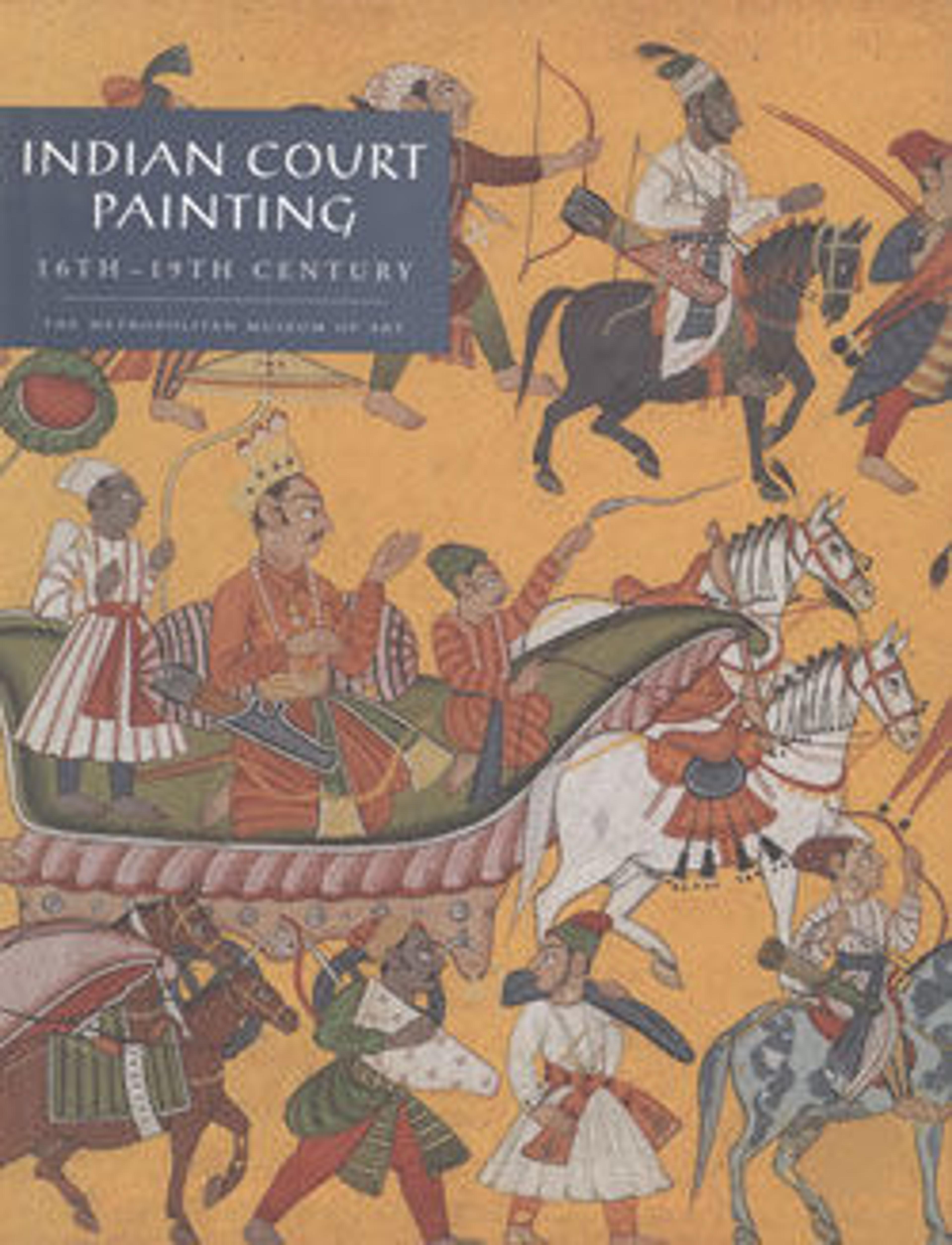"Shah Jahan Watching an Elephant Fight", Folio from a Padshahnama
In this page from the Padshahnama, the artist has created a unified space stretching from the foreground, where goaders are milling, to the top of the scene, where the emperor and his two sons are shown in profile at an open tripartite window. Although the white and red walls of the fort are unmodulated planes, the placement of figures before them gives a sense of spatial recession. The dynamism of the elephant combat balances the impassive family portraits. While the courtiers in the upper tier turn their backs on the melee to face the royals, and the lower figures seem more concerned with the combat, curiously, none of them look directly at the object of their attention, somewhat diminishing the work's psychological intensity. Nevertheless, the artist subtly suggests that the emperor, under his gilded roof, is the lord of all beneath him.
Artwork Details
- Title: "Shah Jahan Watching an Elephant Fight", Folio from a Padshahnama
- Artist: Bulaqi
- Date: probably 1639
- Geography: Attributed to India
- Medium: Ink, opaque watercolor, and gold on paper
- Dimensions: H. 15 1/16 in. (38.2 cm)
W. 9 3/4 in. (24.7 cm) - Classification: Codices
- Credit Line: Harris Brisbane Dick, Louis V. Bell, Pfeiffer and Dodge Funds, 1989
- Object Number: 1989.135
- Curatorial Department: Islamic Art
More Artwork
Research Resources
The Met provides unparalleled resources for research and welcomes an international community of students and scholars. The Met's Open Access API is where creators and researchers can connect to the The Met collection. Open Access data and public domain images are available for unrestricted commercial and noncommercial use without permission or fee.
To request images under copyright and other restrictions, please use this Image Request form.
Feedback
We continue to research and examine historical and cultural context for objects in The Met collection. If you have comments or questions about this object record, please complete and submit this form. The Museum looks forward to receiving your comments.
